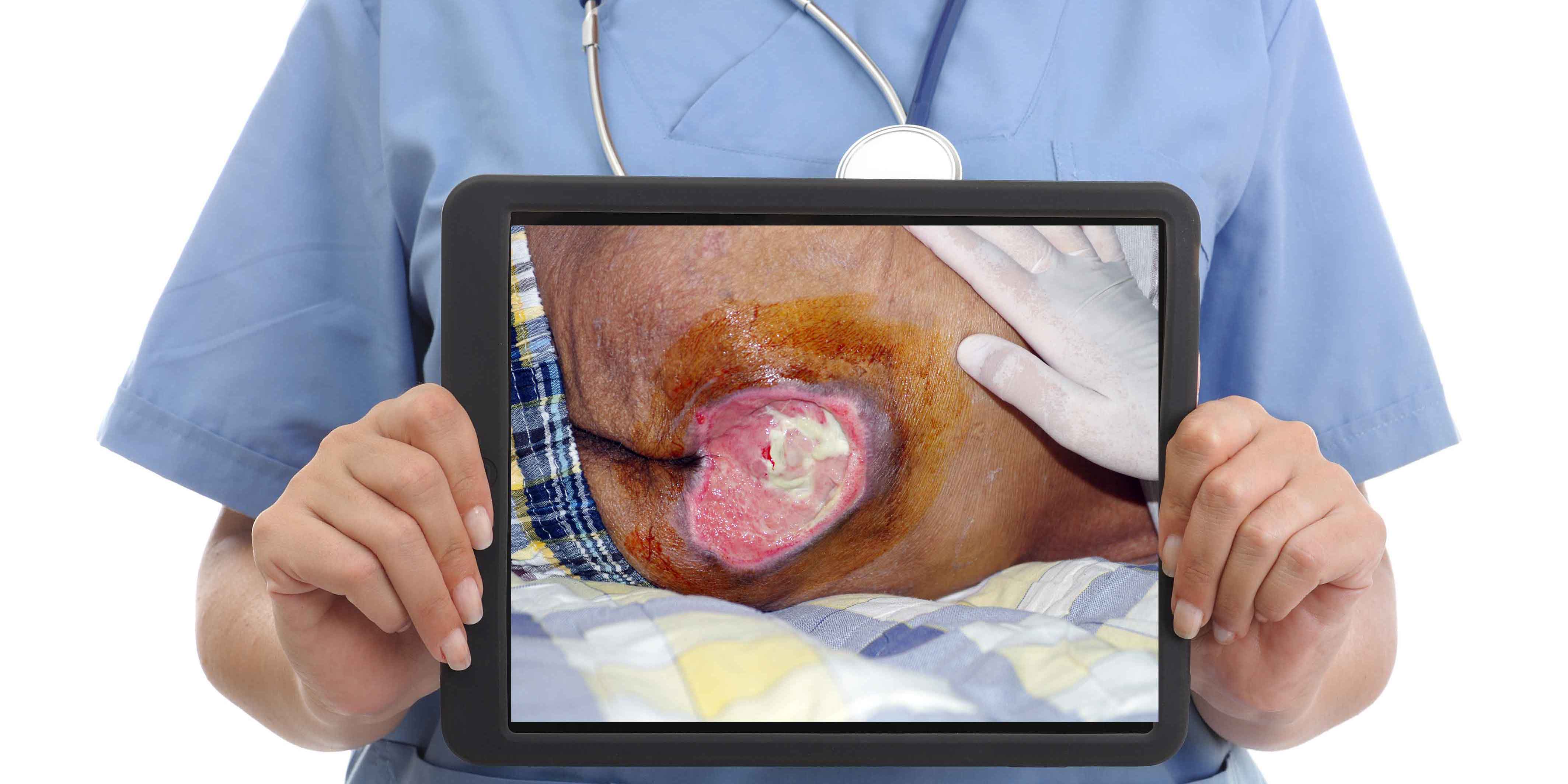Regardless of where a wound care professional practices, following the trajectory of a wound is essential to providing the best care.
In addition to measuring wounds, part of today’s practice sometimes includes taking wound care pictures. The steps involved when photographing wounds depends on your organization’s written policies and procedures.
Some healthcare organizations provide computer-based applications and devices that wound care staff are required to use when taking wound care pictures. These photos are typically uploaded into each patient’s electronic medical record.
Other employers may not provide these tools, however. When this occurs, wound care clinicians may be tempted to use their personal cell phones to take wound photos to monitor the success of their care or share with other clinicians for advice.
Using a personal cell phone for this purpose is a violation of patient privacy and a legal liability, said Nancy J. Brent, JD, MS, RN, a nurse attorney who represents nurses before the state regulatory agency and has a solo law practice in Wilmette, Ill.
Ensure patient privacy when taking wound care pictures
Even if a clinician works for an organization that does not have established policies and procedures related to photographing wounds, Brent said clinicians must work in a manner that protects patients’ privacy.
“Follow established protocols and rules that govern patient privacy, such as organizational privacy practices, HIPAA regulations, The Joint Commission, and state nurse or other applicable state practice acts that pertain to the type of clinician you are and the patients you’re treating,” she said.
Brent noted some states have specific statutes pertaining to photography of children in suspected cases of child abuse, as well as older adults in potential cases of elder abuse.
“Some states only allow specific persons to photograph these patients, so these laws also need to be followed,” she said.
Nicole Rodriguez, LPN, WCC, CWCA, is a field wound care nurse for Amedisys Health in Myrtle Beach, SC, and follows her employer’s specific guidelines.
“Photographing patient’s wounds when we take measurements is a weekly requirement per my manager and employer using our company-provided tablet and company-designated wound care app called Forcura,” she said. “A wound may be photographed more often PRN, but once per week is the minimum required.”
The Forcura app is linked to a patient’s EMR. “Once the photo is uploaded into the patient’s EMR, it’s off of my company-provided tablet,” she said.
Patient consent requirements for wound care pictures
Rodriguez said patient consent is required before taking photographs.
“Patients are asked to give consent to photography whether they have wounds or not,” she said. “The consent for photography form is given with other consent forms and included as part of patients’ start of care paperwork. We ask for photographic consent from every patient, as they can be discharged from the hospital with no wound then develop a wound after they’re home.”
Some employers also can allow consent to be given another way.
“Even if you work for an organization that does not offer a patient consent form for photography, you must get the patient’s verbal consent to take a photograph, then document that the patient gave you verbal consent,” Brent said.
Some no-nos about wound care pictures
One frustration for Rodriguez is when she encounters colleagues requesting to text her a wound photo from their personal smart phone to her personal device while out in the field.
“Since I’m Wound Care Certified (WCC), some co-workers want my opinion on a wound while they’re with a patient,” she said. “They want quick feedback. However, I tell them we need to stick with protocol and not use our personal cell phones for sharing any patient information.”
Brent cautions clinicians against sending photos via personal devices.
“Providing advice on the fly without documenting it can place one at risk for legal liability,” she said. “Further, if a clinician works for an organization that has provided a device for the purpose of taking photographs and has established a policy and procedure for taking photographs of wounds, these need to be followed. Otherwise, clinicians can be held liable if they are not following policies and procedures.”
When an employer approves of photography but does not provide a device for taking wound care pictures, you should consider purchasing a work device to take the wound care pictures.
“Consider purchasing a device designated only to be used for that purpose,” Brent said. “It must be secure and not be used for anything else. Using a personal cell phone to take wound and patient photos is a privacy violation. Also, using public Wi-Fi and a non-secure device is a legal liability.”
Get proactive about policies and procedures
If you work for an organization that does not have established policies and procedures for wound photography, Brent suggests joining your organization’s policy and procedure committee or working with your employer’s risk manager if no committee exists.
Photographing wounds does not take the place of written documentation, however.
“While photographs are important, they are not the end all be all,” Brent said. “Photography should complement good documentation, such as noting the specifics of size, color, location and condition of a wound.”
While Brent said her suggestions are general principles of good practice, they should not be considered legal advice.
She suggested that wound care professionals seeking general guidance on establishing policies and procedures pertaining to photography can reference the “Photography in Wound Documentation: Fact Sheet” document published by the Wound, Ostomy and Continence Nurse Society.
Learn more about wound care today with one of our courses.
What do you think?

